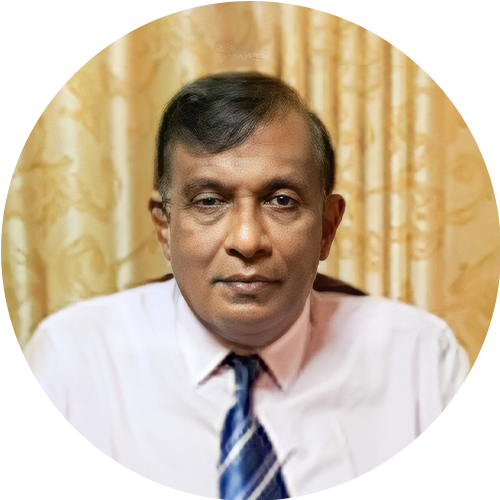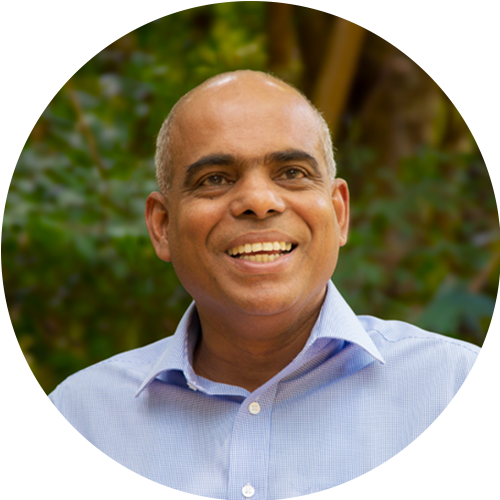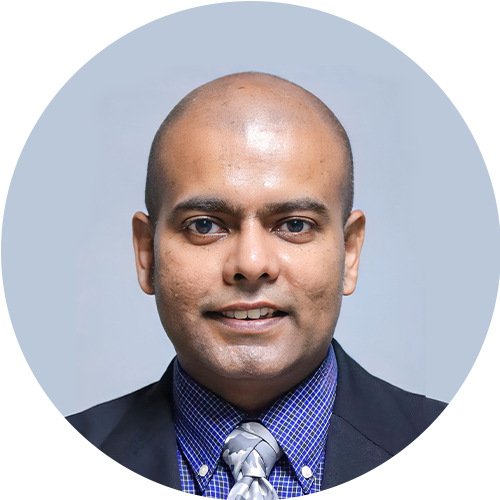Scientific Panel
Dr. Gamini Piyadasa
Scientific Panel
Dr. Gamini Piyadasa
Scientific Panel
Gravitational repulsion (Antigravity) and attraction, and fundamental concepts of energy transportation (Intrinsic Spin – ISpin model) are Dr. C. K. Gamini Piyadasa’s current research interests. His research in both the fields have yielded promising results, giving rise to recent publications in: gravitational repulsion and attraction, and energy propagation in free space. In combination, these findings lead to the Unified Field Theory (UFT) envisioned by Dr. Albert Einstein.
Having started his research carrier in Atmospheric and Thunderstorm Physics, by 1990, Gamini observed many anomalies in present understandings. One was a major foundation in science on <em>propagation and nature of energy in universe</em>. Conducting research on that, he published experimentally proven demonstratable properties of wave nature by interference and diffraction (opposed to the theoretically derived Fresnel-Fraunhofer diffraction principle). A new interpretation by Gamini to the famous Youngs’ Double Slit Interference has led to the new pathway to understanding the nature of energy propagation; based on which, Gamini experimentally developed the ISpin theory. Applying the concept of “ISpin” model, he subsequently published the refined version of Energy Propagation as: <em>“The heuristic model of energy propagation in free space, based on the detection of a current induced in a conductor inside a continuously covered conducting enclosure by an external radio-frequency source”</em>.
By 2009, Gamini’s series of experiments in atmospheric physics led to revealing insights of gravitational repulsion in numerous phenomena both in the laboratory environment and in the nature. The experiments are proving that almost all macroscopic and microscopic phenomena that we experience in nature are governed by the two forces gravitational repulsion and attraction.
Gamini is an instrumentalist and an experimentalist, who obtained his PhD from University of Colombo, Sri Lanka, in collaboration with Uppsala University, Uppsala, Sweden. In the PhD research programme focused on development of Mass Spectrometry techniques, he revolutionised by demonstrating world’s highest Time-of-Flight (ToF) resolution adapting linear successive reflection of molecular ions and other improved mass spectrometry techniques.
The patent US-6,489,610 B was obtained by Gamini for improved mass selection technique in the ToF Mass Spectrometer, which has greatly pushed up the standard limits by 20-fold; going against/challenging the existing theories. The instrument which significantly changed the single mass selection resolution in Time-of-Flight (ToF) Mass Spectrometry is still being manufactured by Thermo Fisher Scientific – Applied Biosystems, and is one of the essential tools in protein characterisation.
Gamini’s passion is to pursue results that are: closer to experience, experimentally proven, demonstratable and generalisable across various contexts. His presentations are always based on experimentally verified data (not theoretical visualisations) and conclusions that can be reached by any layman who is curious about nature. He has published research publications on different disciplines in Physics and Engineering; viz. mass spectrometry techniques, Interference and Diffraction Optics, Electromagnetism, Antigravity and Power System Engineering.
<strong>Gamini has received an array of awards and grants:</strong>
<ul>
<li>International Invention Award Switzerland</li>
<li>Presidential Award Sri Lanka</li>
<li>Fellowship NSF, National Science Foundation Sri Lanka</li>
<li>Sweden Uppsala University Carl Tryggers Fellowship 2001/02</li>
<li>University of Manitoba Grant National Science and Engineering Research Council of Canada (NSERC) 2003/06 – 2011/14</li>
</ul>
Gamini’s life’s purpose is to contribute something to the knowledge of the world, by critically viewing natural phenomena. He pursues hobbies of loving animals and nature. Helping others makes him happy.
<b>Antigravity</b>
<ul>
<li style="font-weight: 400;" aria-level="1"><span style="font-weight: 400;">C.K Gamini Piyadasa, </span><b>Antigravity, an answer to nature’s phenomena including the expansion of the universe</b><span style="font-weight: 400;">, Advances in high Energy Physics, Special issue : </span><span style="font-weight: 400;">Dark Matter and Dark Energy in General Relativity and Modified Theories of Gravity, </span><span style="font-weight: 400;"> (2020) 1-5, </span><a href="https://nextgenphysics.org/wp-content/uploads/2022/12/1st-Antigravity-an-answer-to-natures-phenomena-including-the-expansion-of-the-universe.pdf"><span style="font-weight: 400;">Click to Download</span></a></li>
<li aria-level="1"><span style="font-weight: 400;">C.K Gamini Piyadasa, </span><b>Anti-gravity, a major phenomenon in nature yet to be recognized, Physics Essays, 32, 2 (19) 141- 150 </b> <a href="https://nextgenphysics.org/wp-content/uploads/2022/12/3rd-Antigravity-a-major-phenomena-yet-to-be-recgnized.pdf">Click to Download</a></li>
</ul>
<ul>
<li style="font-weight: 400;" aria-level="1"><b>C.K.G. Piy</b><span style="font-weight: 400;">adasa, Will rising water droplets change science?, Canadian Journal of Pure and Applied Sciences, Vol:6, No. 2, (2012) pp. 1991-1997 </span><a href="https://nextgenphysics.org/wp-content/uploads/2022/12/7th-Will-rising-water-droplets-change-science.pdf"><span style="font-weight: 400;">Click to Download</span></a></li>
<li style="font-weight: 400;" aria-level="1"><span style="font-weight: 400;">C.K.G.Piyadasa, (2011), Antigravity – Is it already under our nose?, Canadian Journal of Pure and Applied Sciences, Vol:5, No. 2, pp. 1585-1588. </span><a href="https://nextgenphysics.org/wp-content/uploads/2022/12/9th-Anti-Gravity-Is-it-under-our-nose-2011.pdf"><span style="font-weight: 400;">Click to Download</span></a></li>
</ul>
<b>Electromagnetics</b>
<ul>
<li style="font-weight: 400;" aria-level="1"><span style="font-weight: 400;">C. K. G. Piyadasa, U. Annakkage, A. Gole, A. Rajapakse, and U. Premaratne, “</span><b>The heuristic model of energy propagation in free space, based on the detection of a current induced in a conductor inside a continuously covered conducting enclosure by an external radio frequency source</b><span style="font-weight: 400;">,” </span><i><span style="font-weight: 400;">Open Physics, </span></i><span style="font-weight: 400;">vol. 18, pp. 212-229, 2020. </span><a href="https://nextgenphysics.org/wp-content/uploads/2022/12/2nd-On-a-Mission-Beyond-the-Realm-of-Classical-Physics.pdf"><span style="font-weight: 400;">Click to Download</span></a><span style="font-weight: 400;"> | </span><a href="https://nextgenphysics.org/wp-content/uploads/2022/12/2nd-Open-Physics-The-heuristic-model-of-energy-propagation-in-free-space-based-on-the-detection-of-a-current-induced-in-a-conductor-inside-a-continuously-covered-conduct.pdf"><span style="font-weight: 400;">Click to Download</span></a></li>
</ul>
<b>Optics</b>
<ul>
<li style="font-weight: 400;" aria-level="1"><span style="font-weight: 400;">C.K Gamini Piyadasa, </span><b>Detection of a cylindrical boundary diffraction wave emanating from a straight edge by light interaction</b><span style="font-weight: 400;">, Opt. Comm., 285 (2012), 4878-4883 </span><a href="https://nextgenphysics.org/wp-content/uploads/2022/12/5th-Detection-of-a-cylindrical-boundary-diffraction-wave-emanating-from-a-straight-edge-by-light-interaction-2012.pdf"><span style="font-weight: 400;">Click to Download</span></a></li>
<li style="font-weight: 400;" aria-level="1"><span style="font-weight: 400;">C.K.G. Piyadasa, </span><b>Experimental observations of redistributed energy in wave interference</b><span style="font-weight: 400;">, Optik – Int. J. Light Electron Opt. 123 (2012), pp 1988-1992 </span><a href="https://nextgenphysics.org/wp-content/uploads/2022/12/6th-Experimantal-Observations-Redistribution-of-Energy-in-Interference-2012.pdf"><span style="font-weight: 400;">Click to Download</span></a></li>
<li style="font-weight: 400;" aria-level="1"><span style="font-weight: 400;">C.K.G. Piyadasa, (2011), </span><b>Visualization of propagation of boundary diffraction wave</b><span style="font-weight: 400;">, European Physical Journal D, Published online: 2 August 2011, DOI: 10.1140/epjd/e2011-20176-2 </span><a href="https://nextgenphysics.org/wp-content/uploads/2022/12/8th-Visuvalizasion-ofpropergation-of-Boundary-Diffraction-Wave-2011.pdf"><span style="font-weight: 400;">Click to Download</span></a></li>
<li style="font-weight: 400;" aria-level="1"><span style="font-weight: 400;">C.K.G. Piyadasa, (2005), </span><b>Redistribution of Energy in Electromagnetic wave interactions – Interference of Electromagnetic waves; a different approach</b><span style="font-weight: 400;">, Sri Lankan Journal of Physics, </span><b>6</b><span style="font-weight: 400;">, 51-64 </span><a href="https://nextgenphysics.org/wp-content/uploads/2022/12/12th-Redistribution-of-energy-in-wave-interference-2005.pdf"><span style="font-weight: 400;">Click to Download</span></a></li>
</ul>
<b>Power Electrical</b>
<ul>
<li style="font-weight: 400;" aria-level="1"><span style="font-weight: 400;">Amila Pathirana, C.K.G. Piyadasa, Athula D. Rajapakse, </span><b>Development and modelling of a new type of sensor for detecting current transients for power system protection, Electrical Power and Energy Systems</b><span style="font-weight: 400;"> 101 (2018) 243–254 </span><a href="https://nextgenphysics.org/wp-content/uploads/2022/12/4th-Development-and-modelling-of-a-new-type-of-sensor-for-detecting-current.pdf"><span style="font-weight: 400;">Click to Download</span></a></li>
</ul>
<b>Mass spectrometry</b>
<ul>
<li style="font-weight: 400;" aria-level="1"><a href="http://discover-decouvrir.cisti-icist.nrc-cnrc.gc.ca/dcvr/ctrl?action=dsere&index=au&req=%22Qiao%2C%20Hui%22"><span style="font-weight: 400;">Qiao Hui</span></a><span style="font-weight: 400;">, </span><a href="http://discover-decouvrir.cisti-icist.nrc-cnrc.gc.ca/dcvr/ctrl?action=dsere&index=au&req=%22Piyadasa%2C%20Gamini%22"><span style="font-weight: 400;">Piyadasa Gamini</span></a><span style="font-weight: 400;">, </span><a href="http://discover-decouvrir.cisti-icist.nrc-cnrc.gc.ca/dcvr/ctrl?action=dsere&index=au&req=%22Spicer%2C%20Victor%22"><span style="font-weight: 400;">Spicer Victor</span></a><span style="font-weight: 400;">, </span><a href="http://discover-decouvrir.cisti-icist.nrc-cnrc.gc.ca/dcvr/ctrl?action=dsere&index=au&req=%22Ens%2C%20Werner%22"><span style="font-weight: 400;">Ens Werner</span></a><span style="font-weight: 400;">, (2009), </span><b>Analyte distributions in MALDI samples using MALDI imaging mass spectrometry, International Journal of Mass Spectrometry</b><span style="font-weight: 400;">, ISSN: 13873806, Vol: 281, Date: March 15, Pages: 41-51 </span><a href="https://nextgenphysics.org/wp-content/uploads/2022/12/10th-Analytical-distribution-In-MALDI-imaging-Mass-Spectrometry-2008.pdf"><span style="font-weight: 400;">Click to Download</span></a></li>
<li style="font-weight: 400;" aria-level="1"><span style="font-weight: 400;">Cristian Santacruz, P. Håkansson, D. F. Barofsky and C. K. G. Piyadasa</span><b>, A Constant-Momentum/Energy-Selector Time-of-Flight Mass Spectrometer.</b><span style="font-weight: 400;">, J Am Soc Mass Spectrom. 2006 Oct 5; </span><a href="https://nextgenphysics.org/wp-content/uploads/2022/12/11th-Constant-momentum-Mass-spectrometer-2006.pdf"><span style="font-weight: 400;">Click to Download</span></a><span style="font-weight: 400;"> </span></li>
<li style="font-weight: 400;" aria-level="1"><span style="font-weight: 400;">C.K.G. Piyadasa, P. Håkansson, and T. R. Ariyaratne, (1999) </span><b>A high resolving power multiple reflection matrix-assisted laser desorption/ionization time-of-flight mass spectrometer</b><span style="font-weight: 400;">, Rapid Communication in Mass Spectrometry, </span><b>13</b><span style="font-weight: 400;">, 620-624, </span><a href="https://nextgenphysics.org/wp-content/uploads/2022/12/13thHigh-resolution-Multiple-reflection-Mass-spectrometer-1999.pdf"><span style="font-weight: 400;">Click to Download</span></a></li>
<li style="font-weight: 400;" aria-level="1"><span style="font-weight: 400;">C.K.G. Piyadasa, P. Håkansson, T. R. Ariyaratne and D. F. Barofsky, (1998) </span><b>A high resolving power ion selector for post-source decay measurements in a reflecting time-of-flight mass spectrometer</b><span style="font-weight: 400;">, Rapid Communication in Mass Spectrometry, </span><b>12</b><span style="font-weight: 400;">, 1655-1664, </span><a href="https://nextgenphysics.org/wp-content/uploads/2022/12/14th-High-resolution-Ion-Selector-in-ToF-Mass-spectrometer-1998.pdf"><span style="font-weight: 400;">Click to Download</span></a></li>
</ul>
<b>Patents </b>
<ul>
<li aria-level="1"><b>Precursor ion selection in tandem time-of-flight mass spectrometer</b></li>
<li aria-level="1">Patent no. US-6,489,610 B1 2002</li>
</ul>
- Phone: +94 70 497 4368
- Email: [email protected]
Prof. S.R.D Rosa
Scientific Panel


Prof. S.R.D Rosa
Scientific Panel
Prof. Rosa has been a very dynamic character in the Educational Industry and his considered as an excellent Physics Lecturer and an educator. Professor obtained his B.Sc. In Physics (Special-First Class), University of Colombo in 1979, M. Sc. In Physics, University of Pittsburgh, Pittsburgh, Pennsylvania, USA in 1982 and his Ph.D.in Nuclear Physics; University of Pittsburgh in 1987.
His keen interest towards understanding nuclear structure and in particular the workings of the ‘weak force’, one of the fundamental forces in nature, Rosa found refuge in the University of Pittsburgh, USA alongside his dear compatriot NASA associate Sarath Gunapala to pursue his research interests. He completed his masters in science in record time in 1982 and continued his doctoral research on ‘weak branches of radio-isotopes’ gaining invaluable experimental expertise in gamma ray spectroscopy. Soon after graduation, Rosa returned home in 1987, especially during a time when the country was in turmoil and many intellects were inclined to migrate seeking greener pastures.
Prof. Rosa has been lecturing since the year of 1980 to present, which marks nearly 41 years of academic lecturing. Currently he is serving as a member of the modeling group of University of Colombo, School of Computing which has won several national and international awards for their excellent research activities. He has an unparalleled capability of connecting Physics principles with events happening in day to day life and therefore students love to attend his seminars and talks.
Few of the accolades won by the group are as follows: Nominated for the World Summit Award (WSA 2011), It is a global activity to select and promote the world's best e-Content and most innovative ICT applications, 2010: Merit- 10th International Asia Pacific ICT Alliance (APICTA) Awards 2010 held in Kuala Lumpur, Malaysia,2010, Gold Award at the National Best Quality Software Awards (NBQSA) 2010 organized by the BCS Sri Lanka Section.
Prof. Rosa continued to inspire many young undergraduates with his wit and conceptual ease of presenting harder concepts of Physics. His lectures on Modern Physics for the first years’ were the most popular and probably carries the rare distinction of keeping every student lively and attentive for more than an hour at ease at lectures. His passion for teaching got him involved in educating teachers as well as students through various forums related to the National Institute of Education and Ministry of Education. Rosa has authored many books for the benefit of both A/L students and teachers and has since gathered much public attention and admiration. Rosa also showed keen interest in popularizing Physics in school students by actively promoting Physics Olympiads in Sri Lanka.
Prof. Rosa also went on to hold the position of Head of Physics from 2006 to 2015. Notably, it was during his tenure that a dedicated research wing for the Department of Physics was identified in the ground floor of the department. He even donated his personal funds to expedite the completion of work for the ground floor research wing. Rosa was a pioneer in establishing the masters degree in physics education in 2006 and his international research experience in Physics Education at Open University, Milton Keynes as a Common Wealth research associate during the early 2005 motivated this effort. Rosa is the current chairman of the atomic energy authority of Sri Lanka and has started a project in pioneered the installation of the very first cyclotron facility in Sri Lanka able to produce radio-isotopes on demand for medical use. Over the years, Rosa has supervised many graduate students under various fields of science and has been a popular visiting lecturer in many academic institutions.
Rosa always approached challenging problems light hearted and had a policy of people first. It was this attribute that made Rosa who he is and for sure made people around him cheerful, joyous and stress free.Professor Rosa has been awarded many affiliations, few of them are he was a Member of the setting panel in G.C.E.(Advanced Level) physics paper from 1989 to 2003 and 2005 to 2013, Controlling chief examiner for Physics in the years 1994, 1999, 2000, and 2020, President of Institute of Physics – Sri Lanka for the year 2004, 2005 and 2006, President of the University of Colombo Science teachers Association (2000 – 2009), Secretary of the Federation of University teachers Association (2006/07), ADB consultant on monitoring and evaluation of the implementation of the new Physics curriculum for local G.C.E.(A/L) (from 1995-1996), Member/Consultant appointed by the Ministry of Education to prepare Physics syllabi for year 10 – 13 under new reforms (from 2005 to 2007), Commonwealth Academic Staff Fellowship tenable in UK – 2004 and many more. He has authored unique books which are very popular among Physics students and teachers. Initiation of all Physics related Olympiads competitions in Sri Lanka is his brainchild.
Dr. Darshi De Saram
Scientific Panel


Dr. Darshi De Saram
Scientific Panel
How intelligent beings naturally learn and improve: Reflective Practice and Metacognition are among Dr. D. Darshi De Saram’s interests. He endeavours to:
<ul>
<li>Change the focus of management to natural ways we work and learn.</li>
<li>To bring back attention on management aspects that intelligent beings naturally feel, recognise and synthesise, but often ignored in today’s management trends.</li>
</ul>
He promotes everyone to think beyond systemic cause and effect rationality to appreciate: Complexity and Chaos, Evolutionary Dynamics, Bandwagoning, Spontaneous Self-organisation, Sensitivity to Initial Conditions, Perceptual Reorganisation, and so on.
Darshi pioneered the application of the Critical Incident Technique (CIT) in construction research. Developed an alternative to the process-based approach for evaluating the quality of professional performance. He conducts qualitative research into Organisational Dynamics and Complexity.
With a Mechanical Engineering background, Darshi joined the Construction Industry to handle Mechanical aspects of Construction. His work soon expanded to Coordinating and Managing Electrical and Civil work aspects as well, where he actively reflected on experiences to maximise learning. Darshi observed challenges in Coordination and Management, leading to failure in applying technical knowhow, thus projects losing opportunities to deliver benefits. This interested him to focus his postgraduate research on Quality of Coordination activities during the Construction process.
He worked in varying roles in different regions across the world. Darshi brings construction experience in commercial, residential and industrial building, MEP, plant erection, external mains, and highway, across multidisciplinary, culturally diverse, and transnational contexts. He accumulated wide experience being active in: design, maintenance, manufacturing, marketing, research and teaching; Multidisciplinary and Multicultural Experience.
Darshi taught at the Native American educational outreach programme ‘Pre-Engineering Educational Collaborative (PEEC)’. He achieved the award ‘Advanced Communicator Gold’ at Toastmasters International.
Putting a smile on another living being’s face, is what makes Darshi happy. He pursued a variety of hobbies: Swimming, Photography, Aero Modelling, Kite Flying, Bird Watching and Bee Keeping.
- Phone: +94 77 025 2026
- Email: [email protected]
Dr. Asanka Pallewatta
Scientific Panel


Dr. Asanka Pallewatta
Scientific Panel
When a widely held idea does not have proof by either evidence or logical explanation based on so called ‘science’, it is commonly labelled as a ‘myth’; at times as either ‘rubbish’ or ‘nonsense’. But, when there is some kind of proof by either evidence or logical explanation, it is accepted as ‘science’. By such arguments, concepts are pushed into two extremes; often obstructing detection of subtle phenomena. Lt.Col. Dr. Asanka Pallewatta has strong interests in exploring unseen facets of these two extremes. Having a strong research background in nanotechnology, Dr. Asanka’s passion is venturing into either less explained or under researched or unexplored areas of knowledge; such as parapsychology, cultural heritage.
In the field of fashion photography, Dr. Asanka is a recognized professional photographer. He started photography as a hobby in 2000, after moving to Japan as a Monbushō scholar. He has stepped into the field of fashion photography in Denmark, from Copenhagen Fashion Week in 2011.
Dr. Asanka is a person with many hobbies. He loves travelling, and exploring various facets in different cultures. That made him so passionate of linguistics as well. He does professional interpretations and translations, mainly between Japanese and Sinhala languages. Since 2019, he is doing ICT based visiting lectures in the Japanese medium, for the Department of Modern Languages, University of Kelaniya.
Currently Dr. Asanka is working as a senior lecturer (Grade I) at Gampaha Wickramarachchi University of Indigenous Medicine; the sixteenth state university in Sri Lanka. He is also serving as a consultant in Total Productive Maintenance (TPM), and has introduced TPM as a professional subject in Technology curricula in Sri Lanka. With Dr. Asanka’s expertise in Learning Centred Education and education pedagogy, he has designed two complete degree programmes: BHSc (Hons) in Biomedical Technology, and BHSc (Hons) in Health ICT. Both the degree programmes, now functioning very successfully, were designed and UGC approval obtained within one year; which is a great feat.
Dr. Asanka is into diverse artistic fields such as Sinhala poetry, Japanese traditional ink painting, Indian classical music. With the sharp senses developed pursuing fashion photography, he enjoys both the beauty and the depth of anything. He always strives to learn something from anything; builds on both the depth and breadth of knowledge and experience; broadens horizons and stays humble. Dr. Asanka’s contribution to the team is measureless!
Dr. Vikum Premalal
Scientific Panel


Dr. Vikum Premalal
Scientific Panel
<strong>Lorem Ipsum</strong> is simply dummy text of the printing and typesetting industry. Lorem Ipsum has been the industry’s standard dummy text ever since the 1500s, when an unknown printer took a galley of type and scrambled it to make a type specimen book. It has survived not only five centuries, but also the leap into electronic typesetting, remaining essentially unchanged. It was popularised in the 1960s with the release of Letraset sheets containing Lorem Ipsum passages, and more recently with desktop publishing software like Aldus PageMaker including versions of Lorem Ipsum.

